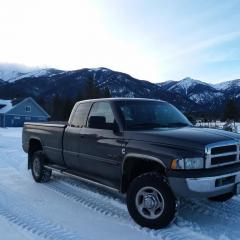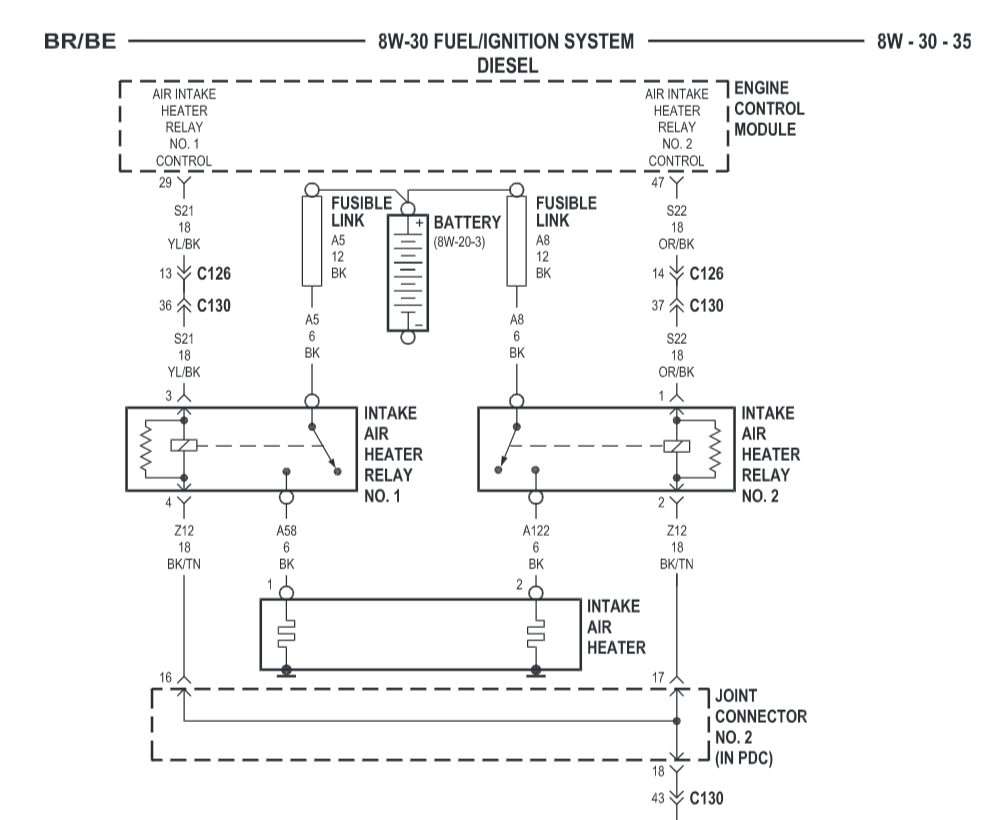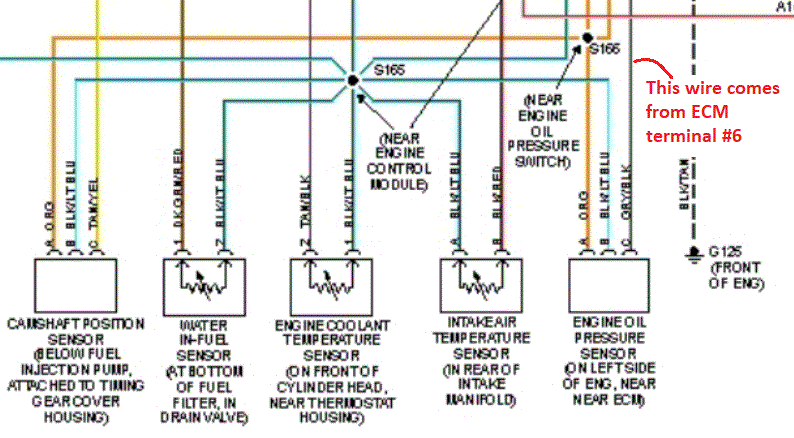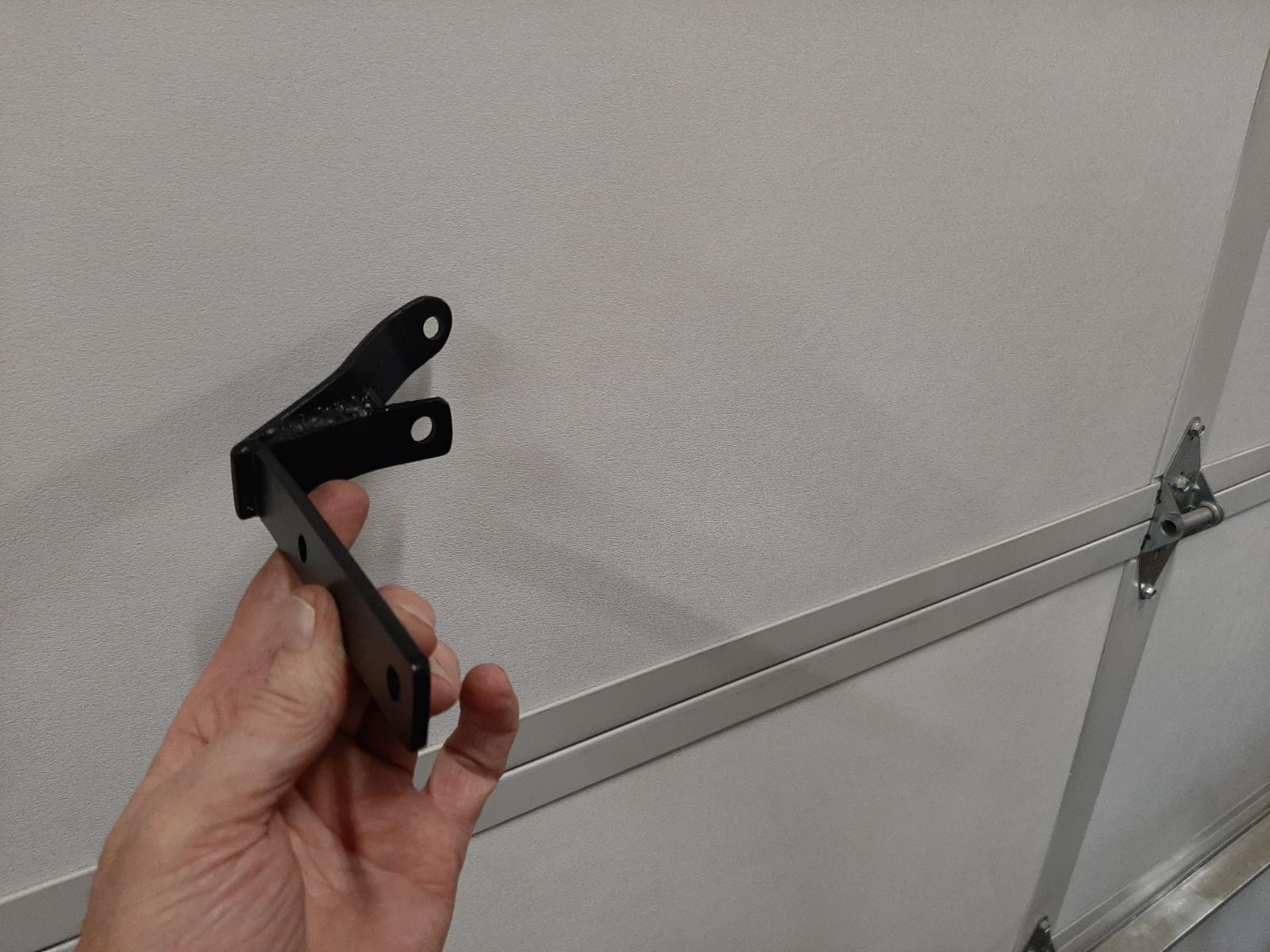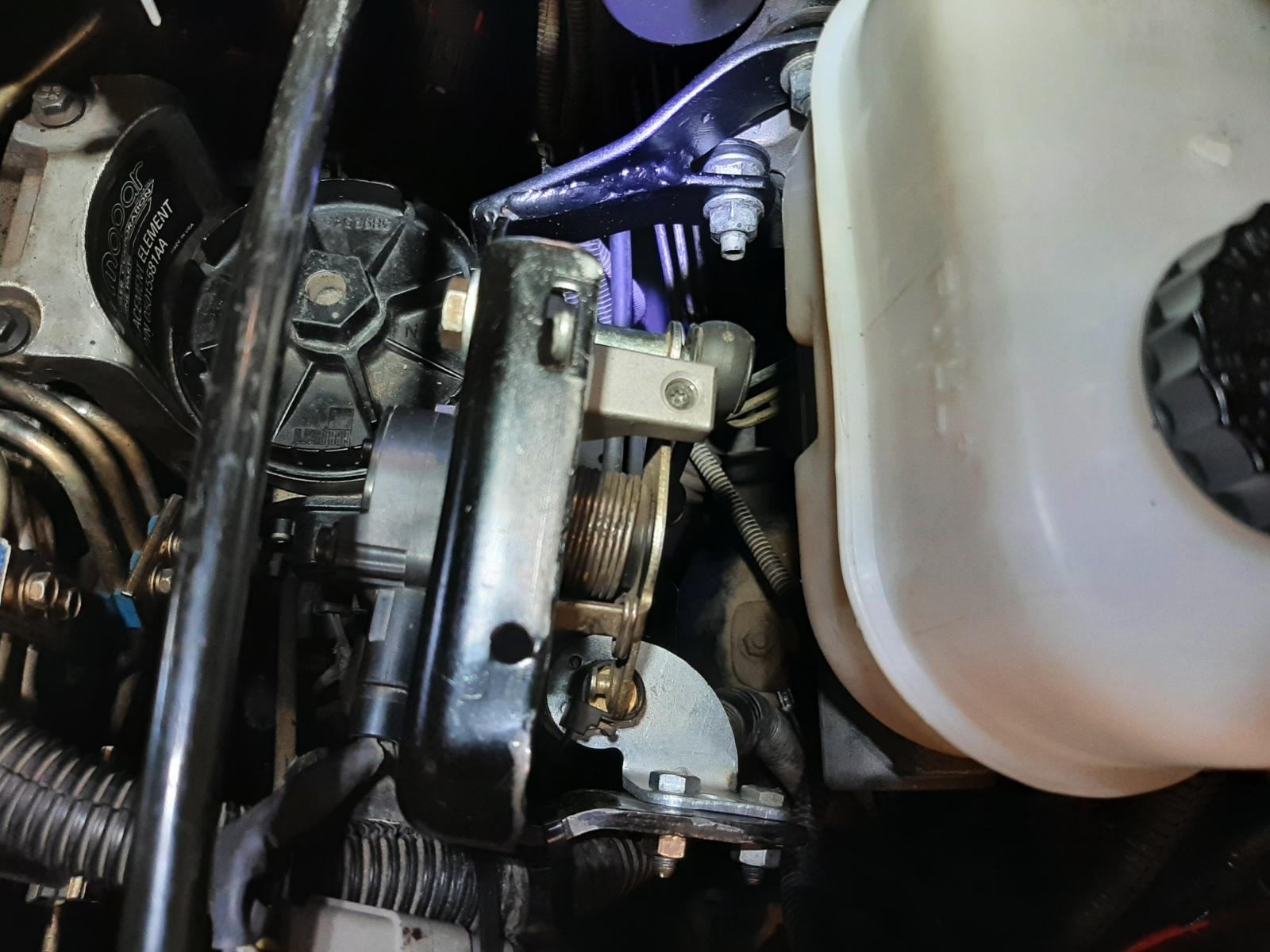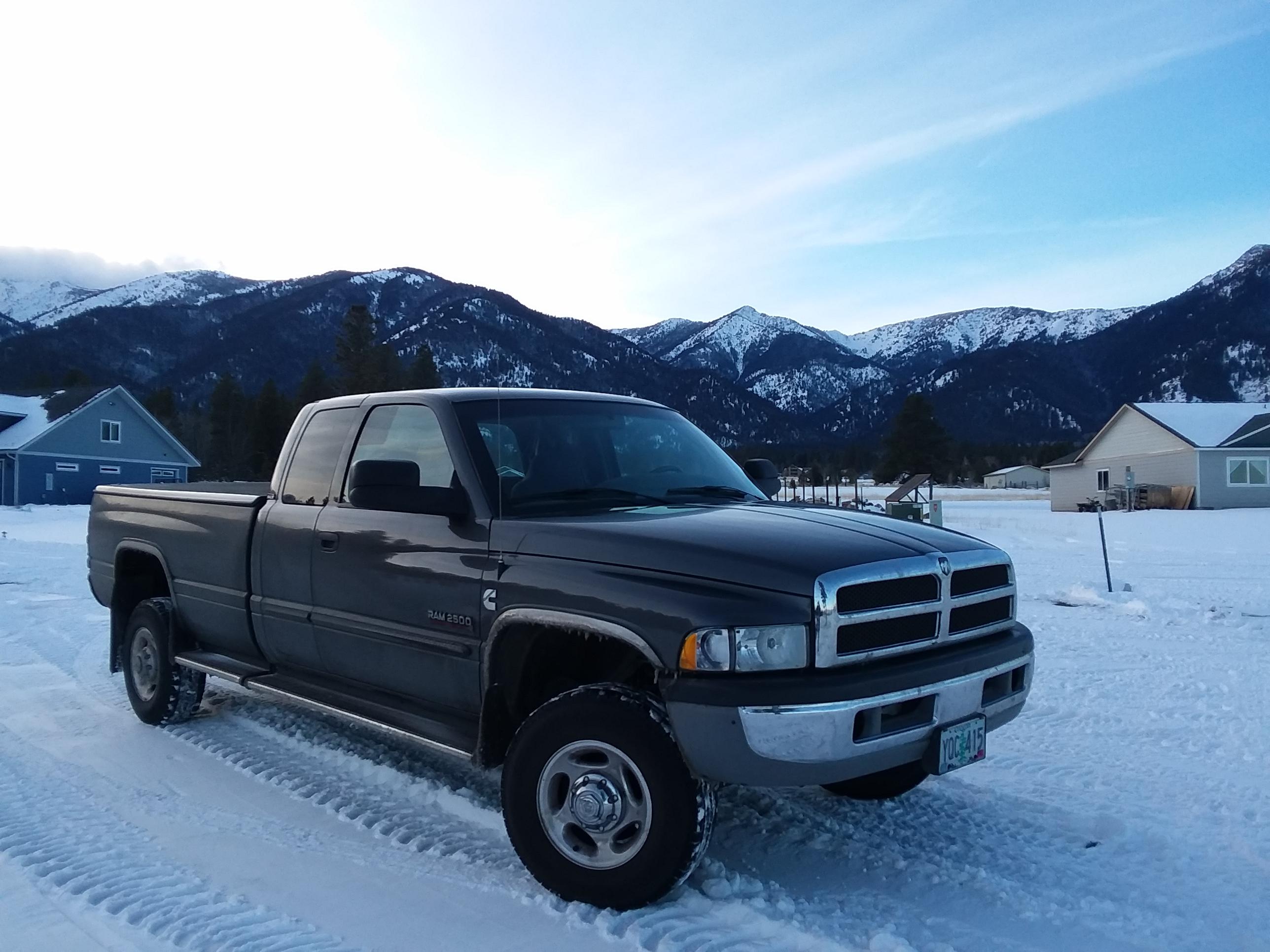
Everything posted by Tractorman
-
Is my grid heater dying?
Using a test lamp, did you check all the places that should have power? I would do some testing before replacing parts. - John
-
Been a little absent lately.
Your father was very fortunate to have such a thoughtful and caring son. - John
-
Is my grid heater dying?
It would be easy to check for battery voltage at the two large wire connections on the grid heater. If there is no voltage present, then the two fusible links may have failed, OR maybe you disconnected the driver side positive battery cable and forgot to reconnect the two leads to the intake heater? I know I wouldn't do anything like that..., - John
-
Is my grid heater dying?
Did you observe the normal voltage drop while the "wait to start" light was on? I don't know what your temperatures were where you live in Kuna, Idaho were today, but here, near Baker City, the high was only 26 F. - John
-
Engine heater
@Mopar1973Man, @Mace is referring to a Wabasto engine block heater that is powered by DIESEL FUEL from the trucks fuel tank. It is exactly what you would want when it is - 40° and no place to plug in. - John
-
2004.5 engine stopped running while driving
I would start with simple things first. * Check for any DTC's - write them down and clear them * Check all battery and ground connections, including cross-over cable. * Replace the fuel filter. Cut it open and check for water or any other contamination. Before removing the old filter, drain some fuel from the housing into a clean, clear container. How old are the batteries? What condition are they in? These trucks require the electrical system to be in excellent condition for reliability. - John
-
93 oil pressure switch
Glad to hear all is well..., - John
-
93 oil pressure switch
I think that is a VE distributor type fuel injection pump, but I can't answer your question about the fuel leak. I wouldn't be surprised if the seal is replaceable without removing the pump. As far as your "no oil pressure" issue, I have read (but have not experienced) that an oil pump that has not operated over a long period of time can be difficult to prime. Is your engine cranking speed fast? If not, I would address that first with a healthy battery / batteries and good electrical connections. You could crank engine with the oil filter removed to see if you are getting any oil. This may help prime the oil pump, as well. Just be sure the engine is disabled from starting. - John
-
93 oil pressure switch
What is the history on the '93 engine that you just installed? And I'm not being a wise guy, but has the crankcase been filled with fresh oil? - have to cover all bases. Also, while the engine was out of the truck, was the crankcase filled with oil? Maybe a plugged oil suction screen? A little more history may help. - John
-
GDP Fuel Boss
You definitely need a fuel filter between the mechanical pump and the VP44. I believe that the last component before entering the VP44 should be a fuel filter, regardless of which fuel supply system is being used. - John
-
Throttle Assembly Re-location Mod
I didn't perform the relocation for concern of the life of the APPS. My original APPS lasted for 289,000 miles (17 years). I have just over 100,000 miles on the Timbo replacement that I now know is really a re-wired Williams Control unit (thanks to @Mace). I relocated the APPS throttle assembly because of the amount of noise the throttle transmitted into the cab - this is what @01_Cummins_4x4 is asking about. - John
-
Oil pressure gauge intermittently working
The diagram below is from my 2002 FSM. I believe that there are 2-wire and 3-wire oil pressure switches used in the 24 valve 2nd gen trucks. As you can see, there are several components that are grounded to the ECM. The oil pressure sensor, camshaft position sensor and MAP sensor (not shown) receive 5 volt supply from the ECM. Terminal #11 on ECM (ground) goes to Splice 165. Terminal #10 on ECM (5 volt supply) goes to Splice 166. Since you don't seem to be having a problem with other sensors, I think you may have an oil pressure sensor problem. - John
-
Oil pressure gauge intermittently working
Two things come to mind. Oil pressure is serious business. First, I would immediately check engine oil level. If it not showing on the stick, obviously add more oil and find the source of the leak. Second, If it is overfull, then check for serious fuel dilution. Low oil viscosity can result in low oil pressure. If everything checks out okay, then temporarily install a mechanical gauge to verify oil pressure under the same operating conditions. If the oil pressure is good, then replace the oil pressure sensor. - John
-
Throttle Assembly Re-location Mod
It is easy to test if there is noise being transmitted by the throttle. Set the cruise to about 65 mph and take your foot off the throttle. If there a noise, or a change in noise, or a noise that goes away (or gets worse) when you touch or rest your foot on the throttle, then you know there is engine noise being transmitted by the throttle. The noise is like a buzzy / rattly sound. Mine was there since the day I bought the truck. I just thought it was normal. Occasionally, my wife would ask me, "What is that noise?" and I would go, "Yeah, annoying, isn't it?" If this noise is occurring in your throttle, it is not necessary to re-mount the throttle assembly in the same place that I did, it just needs to be detached from the engine and mounted somewhere else. - John
-
Throttle Assembly Re-location Mod
Duly noted. There is sealant inside the heat shrink and I wrapped the wires full length with electrical tape. Just not shown in the photo. I just recently started using Deutsch connectors, so I will invest in the crimping tools. - John
-
Throttle Assembly Re-location Mod
It used to be mounted on the left side front of engine. The piece in the photo can be removed, as well. I left it in place because that is where my coolant filter is mounted. It uses the two holes on top. Very little additional cost. A couple of Deutsch connectors. - John
-
Throttle Assembly Re-location Mod
You pose a good question. Also, how is your cruise control connected? Will it be an issue, as well? Also, do you experience the rattly, buzzy sound that is transmitted from the engine, through the throttle cable, and then amplified through the pedal? I think if I was in your shoes, I would disconnect the throttle assembly, but leave the throttle cable and the downshift cable connected. Then, I would try to place the assembly into position and observe how the cables behave. This is how I determined that mine would fit into the location it now resides. Something that I found interesting..., the throttle assembly is used on 2003 and 2004 Dodge Cummins trucks, too. My brother-in-law owns a 2003, but it does not have one mounted to the engine. I followed the throttle cable in the engine compartment and found it does use the throttle assembly - it's hidden under the driver side battery! So, I'm thinking that Dodge moved it for some reason. If you want to pursue making the change, just let me know - I will help any way I can. - John
-
Greeeting! :)
Interesting that you don't have the noise issue. I started a new thread on why, where, and how I re-located the APPS throttle assembly. - John
-
Throttle Assembly Re-location Mod
First, and foremost, I was inspired to perform this modification by @Mace (a new member with lots of knowledge) who provided the idea - I never would have thought to do it on my own. I also want to thank him for providing the "how to do it " information as well as a list of parts. Well, I am finished, but I didn't do it the way Mace from Kamloops did it and in no way is my modification any better that what Mace did - in fact, some may prefer his modification over mine. After much of going this way and then that way and then repeating myself, I just finally came to a stand still. So, I stopped working and started thinking about what I really wanted - which was: * I want the engine noise that is being transferred through the throttle cable into the cabin - Gone! * I want the APPS throttle assembly removed from the engine. So, after re-thinking this AGAIN, I thought why not just remove the assembly from the engine and re-mount it elsewhere in the engine compartment? That way, nothing changes: * I keep my fast idle solenoid * I keep the adjustable throttle stop * I keep the 45° sweep of the APPS * I eliminate the transmission of engine noise into the cab. * I get the delicate APPS away from the pulsing, vibrating engine! So, that's what I did. There are no changes inside the cab. I just relocated the complete throttle assembly to a place between the brake master cylinder and the oil dipstick tube. I fabricated a custom mounting bracket and used two existing bolts on the the hydraboost / brake master cylinder unit for mounting the bracket. This photo shows the custom fabricated mount and its new location. Two more sets of bolts and nuts and the throttle assembly is mounted. Everything is easily serviceable. The throttle unit can be unbolted (either from the hydraboost or the APPS mount) with just two fasteners. The unit can be lifted up and laid flat for throttle cable disconnect / replace. The APPS can be removed / installed without removing the throttle assembly. The idle stop and the fast idle can be adjusted with the engine running. The fuel filter is easy to remove / replace. Now for the best news - the noise is gone! Absent! Doesn't matter whether or not my foot is on or off the throttle or if cruise control is engaged or not. I didn't realize it until now, but that rattly noise was always there to some degree at every throttle position - including foot off the throttle. When I turn on the Fast Idle switch now, the tach goes to about 1150 rpm and is steady as a rock (used to float +/- 50 rpm). Shoulda done this about 393,000 miles ago! - John
-
Greeeting! :)
If you are experiencing the noise that I am referring to, you will not need to put your head under the dash. My noise is most noticeable at highway speed and the noise is being directly transmitted through the throttle cable and the throttle pedal acts as a speaker. I can set the cruise control and remove my foot from the throttle and the noise will either subside, or sometimes be worse. Other times its works the opposite way, but it is there to some degree all of the time. Very annoying..., well, actually, not annoying any more! - John
-
Greeeting! :)
I completed my project yesterday. I was successful. Before I go into detail, @Doubletrouble, do you get an obnoxious rattly sound transmitted from the engine to inside the cab via the throttle? My truck has always been that way since new. I have a friend who has a '99 truck with a 6 spd since new and he says his is that way, too. @Mace, was yours that way before you relocated the APPS? Doubletrouble, I'll wait 'til you finish your popcorn..., - John
-
Engine heater
In 2000, I was working in Vehicle Maintenance at the Copper Mountain Ski area in Colorado. We started using Wabasto heaters on our buses. Nothing like opening the doors on a 10°F below zero morning and stepping into an already warm bus. - John
-
Greeeting! :)
I set up my OEM throttle assembly complete with the throttle cable operational for a bench test. It turns out that although the OEM APPS shaft rotates 45°, the actual foot throttle rotation is about 20° due to the different lever length combinations along the way. So, that would be much more in alignment with the replacement bellcrank, which has a 20° sweep. I was overthinking it, as usual. I will now proceed with using the replacement bell crank assembly. - John
-
Greeeting! :)
Thank you, I will give that a try. - John
-
Greeeting! :)
@mace, I am proceeding with my APPS relocate. I have removed all the necessary items. There is a pin that is pressed into a part of the aluminum bracket that I need to remove so I can use the hole for my custom bracket (not made yet). Did you remove this pin, and if so, how did you do it? - John


